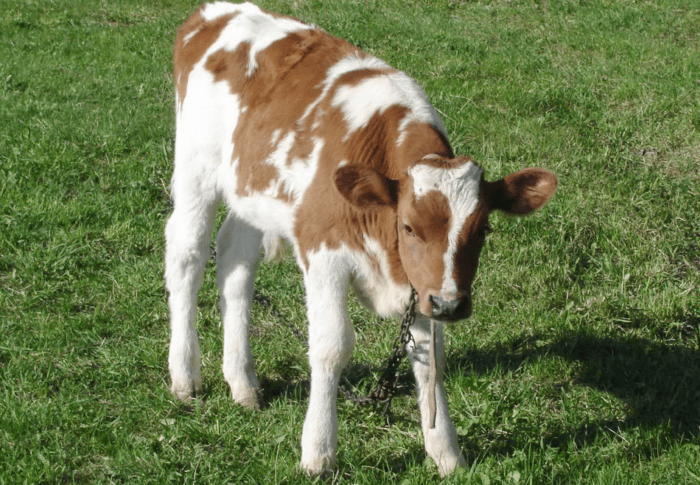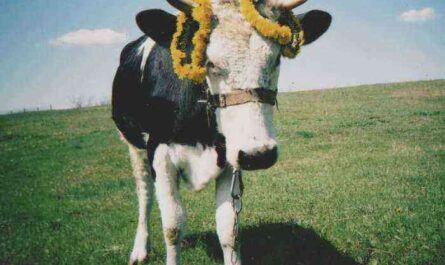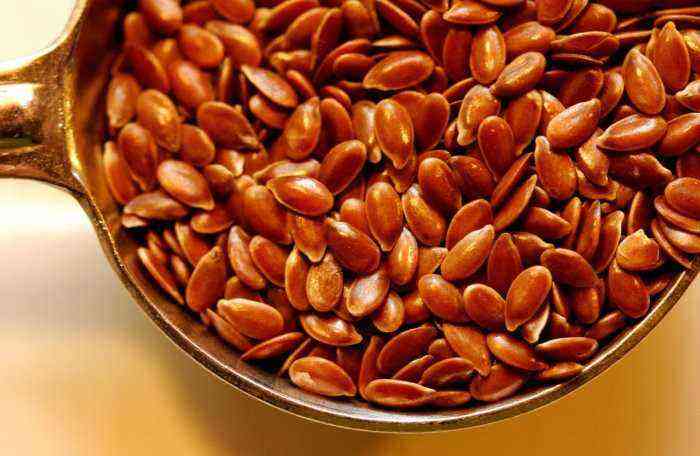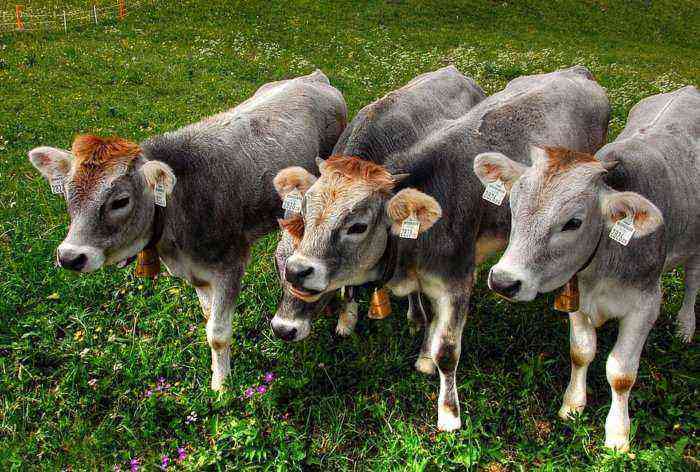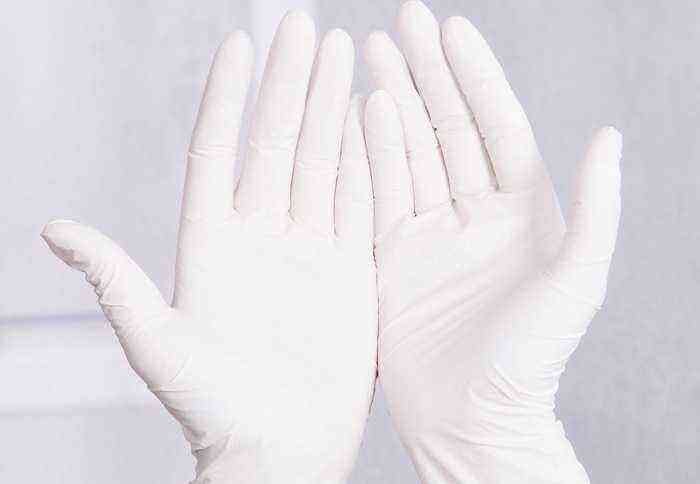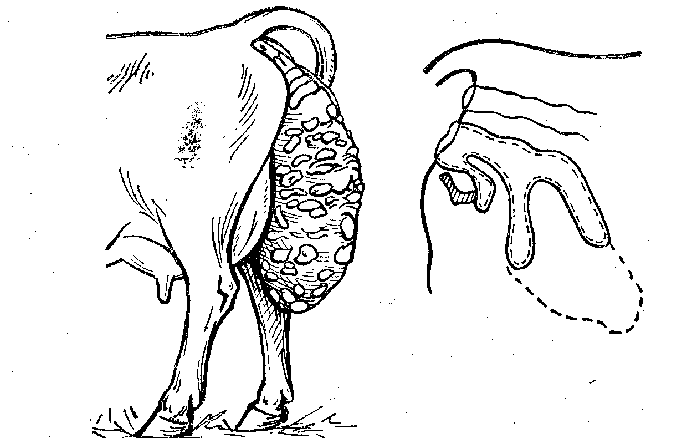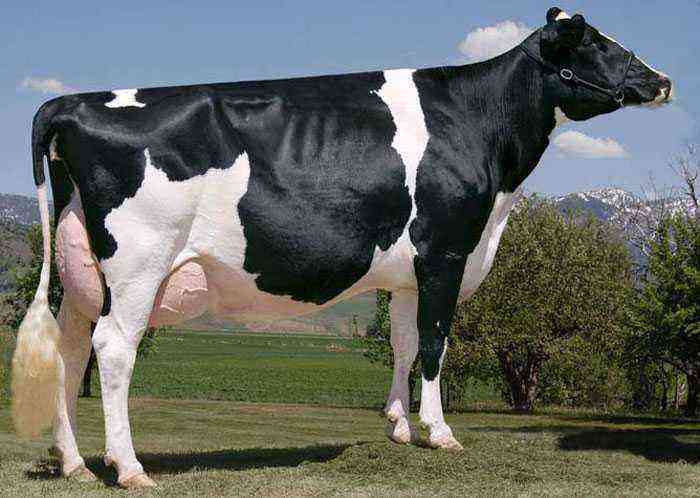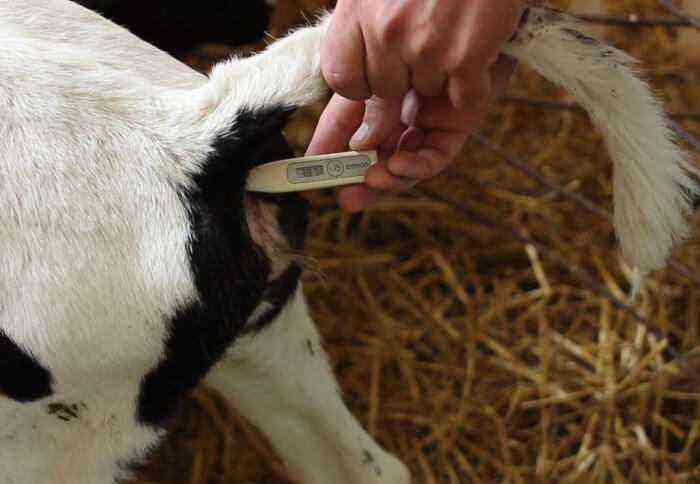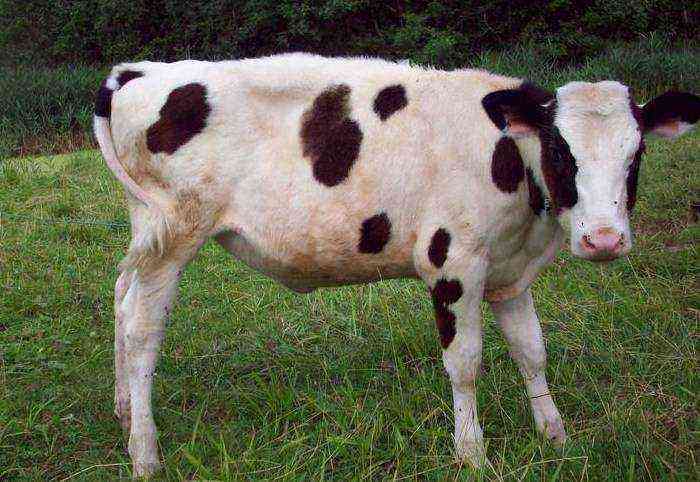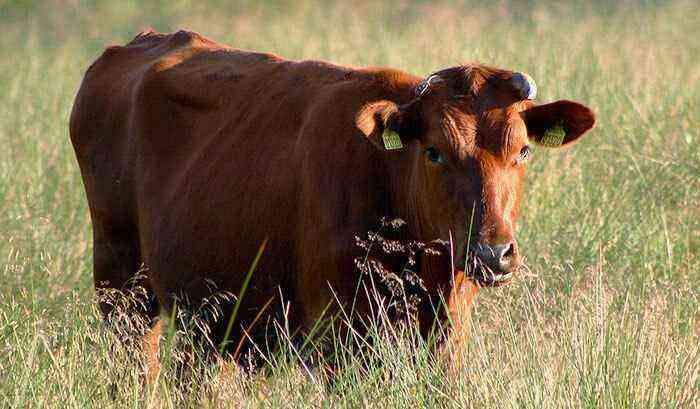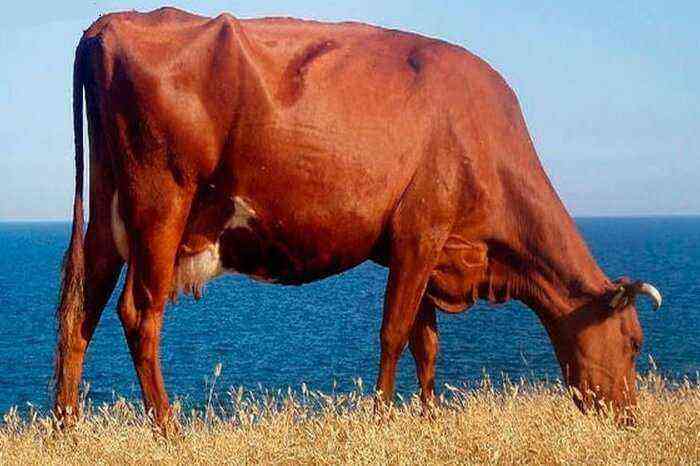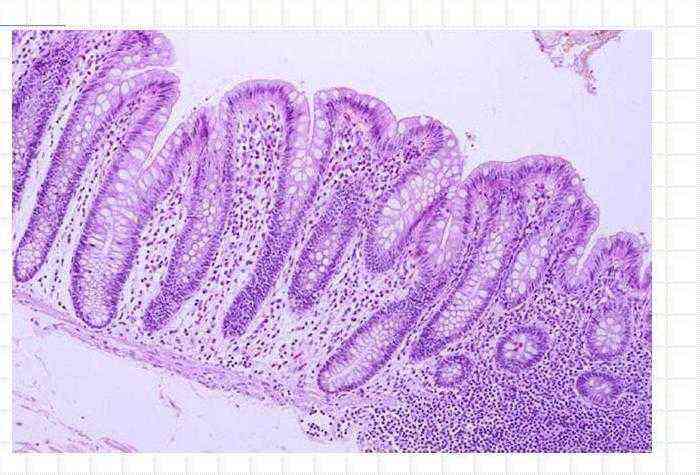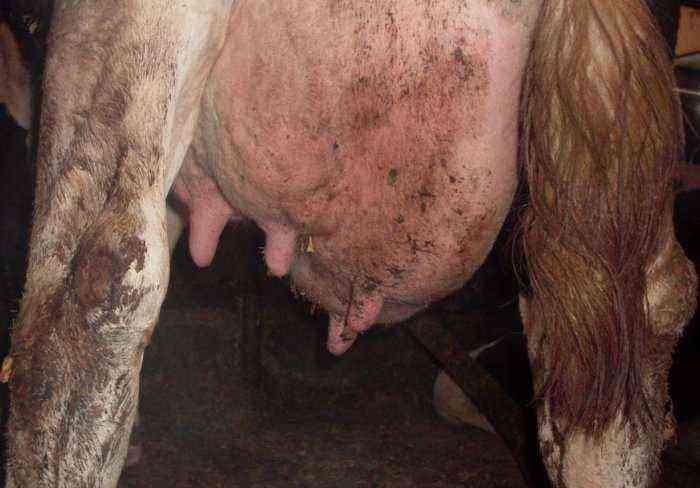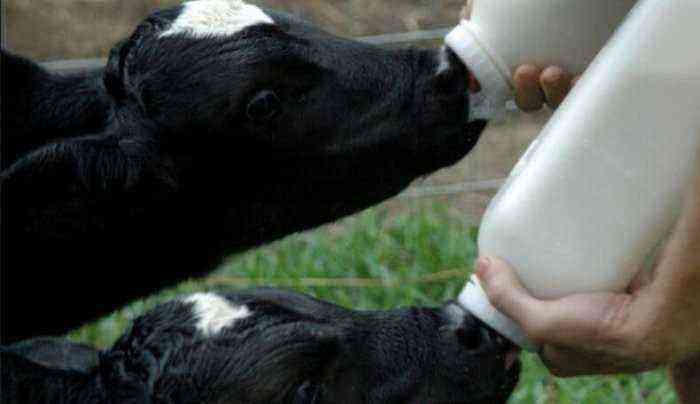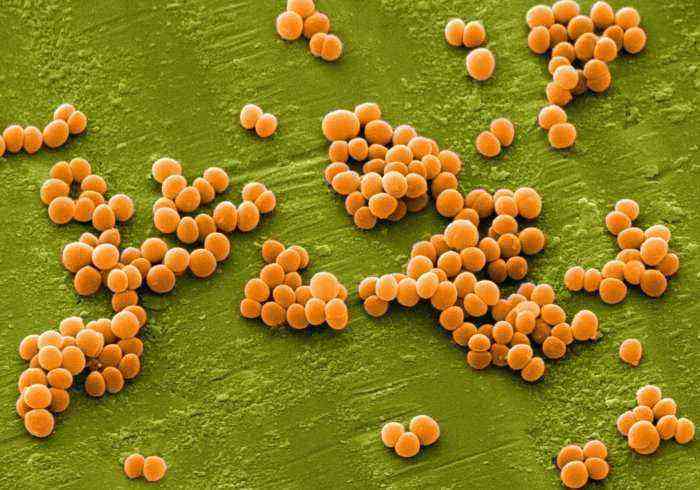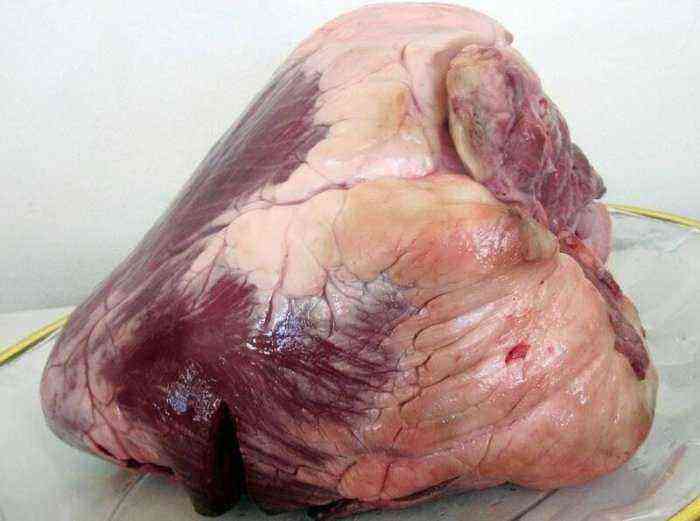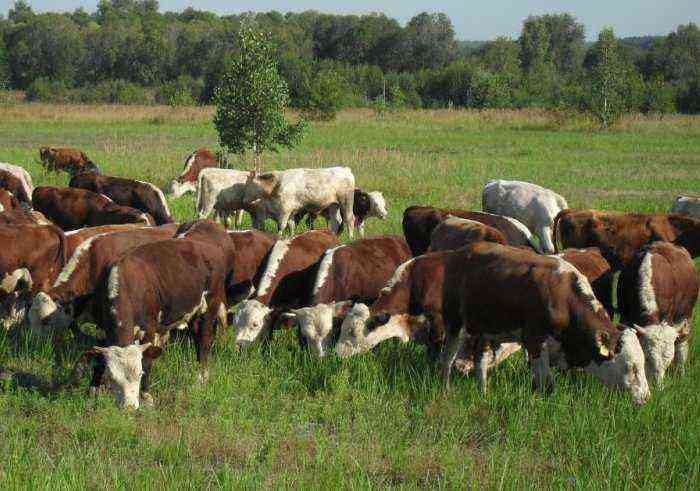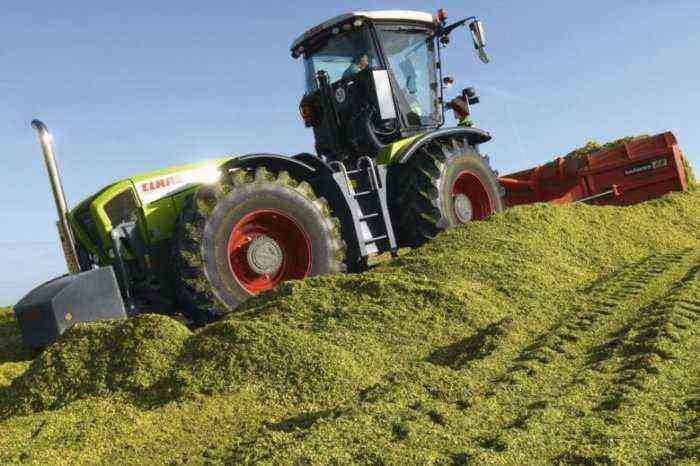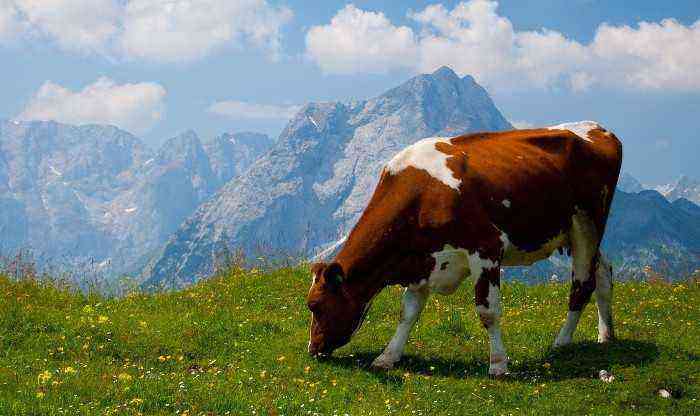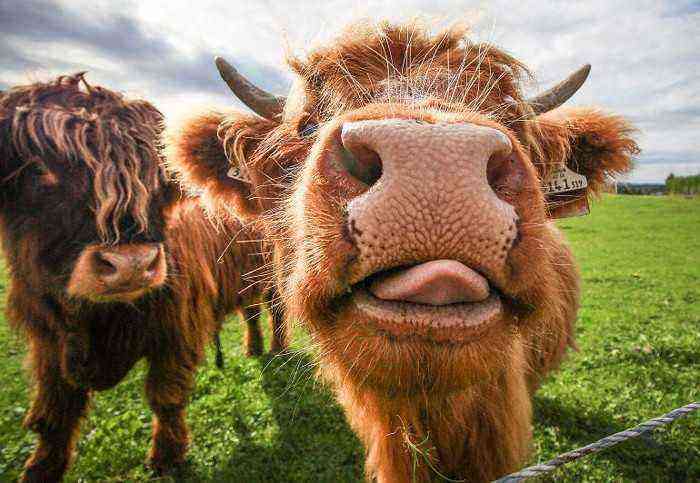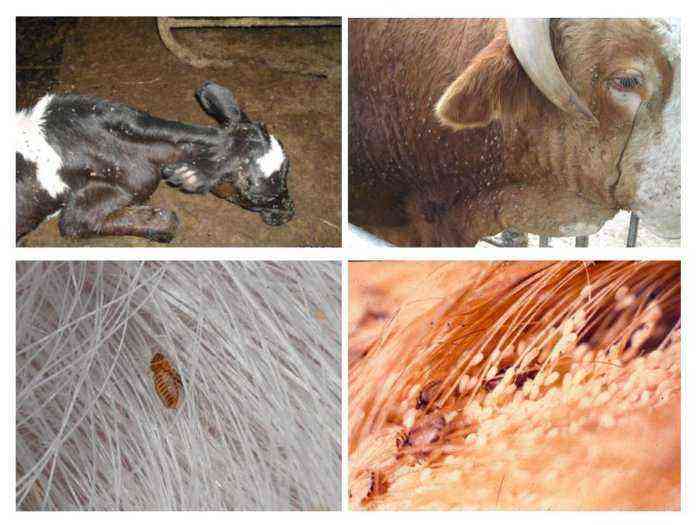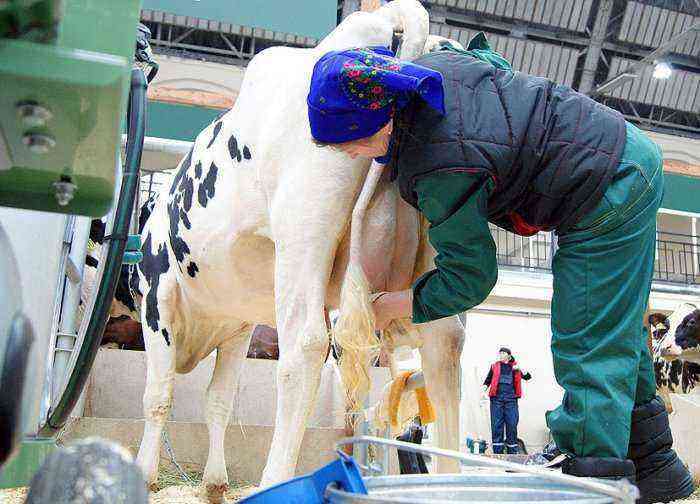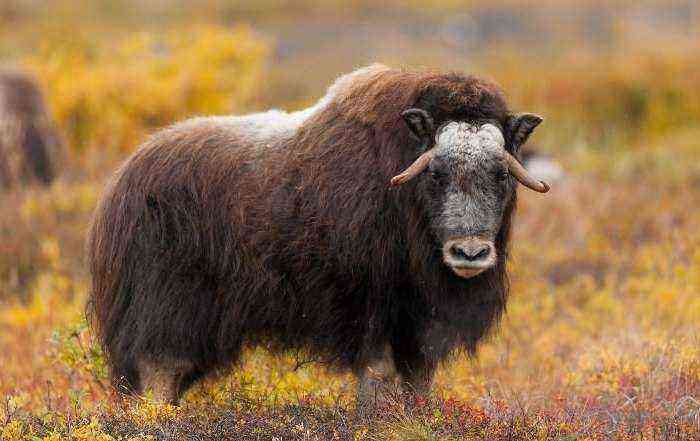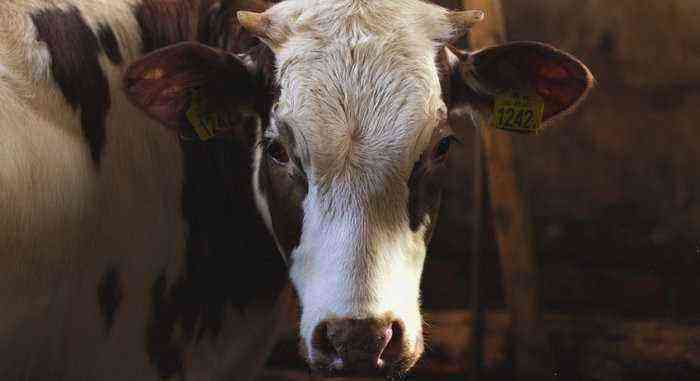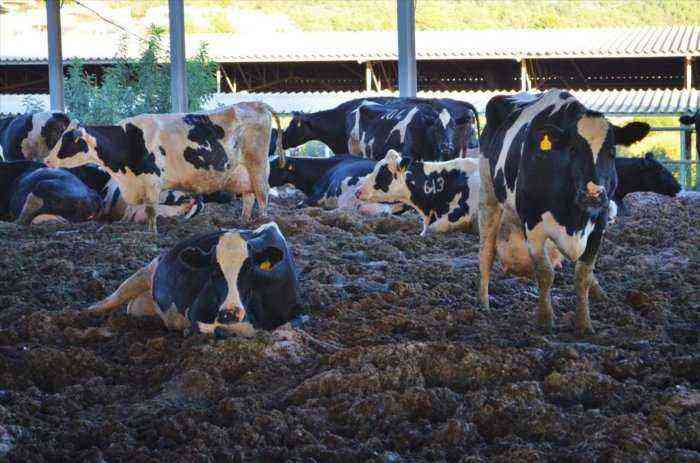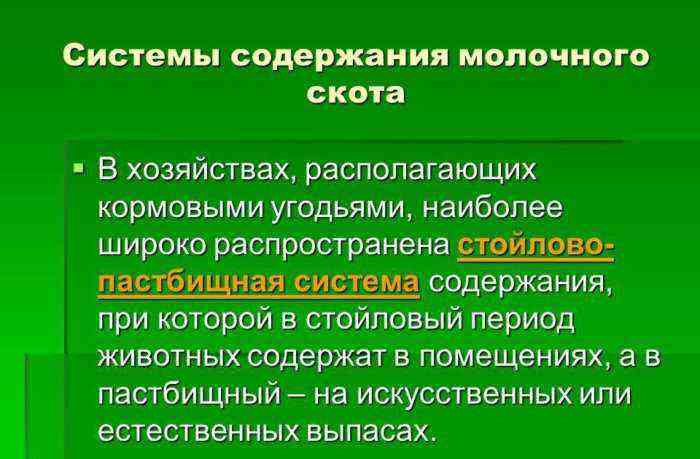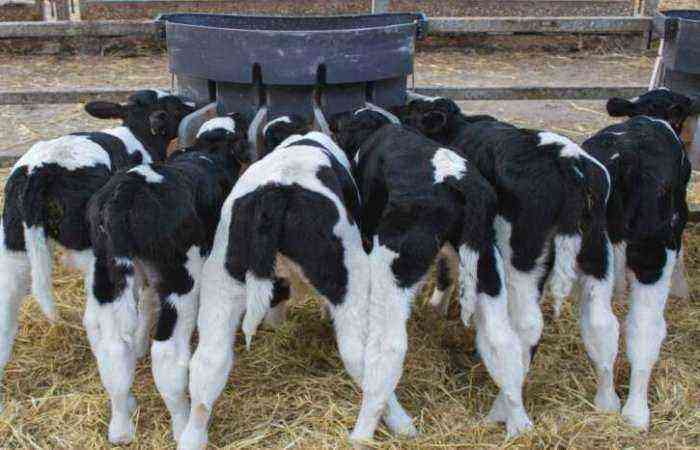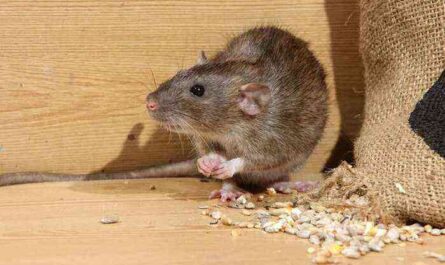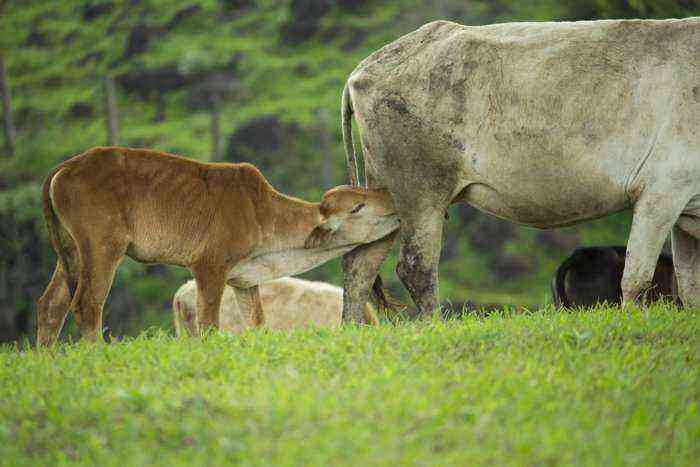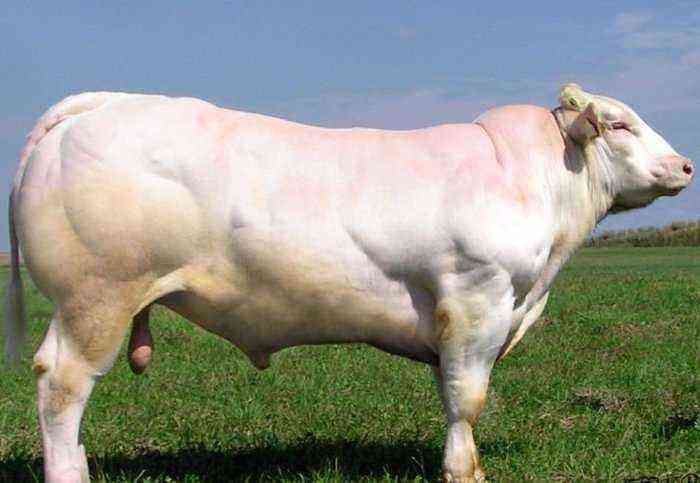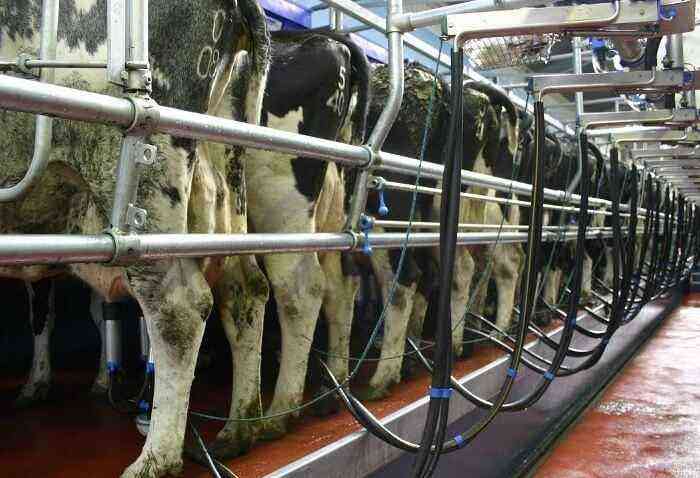Diseases of cows can be conditionally divided into two groups – infectious and non-infectious. Those that belong to the first group are the most dangerous, as they quickly spread to healthy individuals, and some of them are transmitted to humans. Due to infections, you can lose a large part of the livestock. Non-communicable diseases of cows do not pose a danger to the entire herd, but can lead to the death of one animal. In any case, the farmer should receive information about how these diseases manifest themselves and how to help their cows.
sick cow
Infectious diseases
Infectious diseases of cows are caused by various virulent viruses, bacteria, fungal microorganisms that can spread from one animal to another. As a result of infection of one individual, the whole herd may suffer, and the farmer will suffer great losses. Consider which infectious diseases are most common in cows:
- Brucellosis.
- Foot and mouth disease.
- Smallpox.
- Tuberculosis.
- Rabies.
- Leukemia.
- Actinomycosis.
It is worth paying attention to each of the listed diseases in order to have an idea of what symptoms indicate infection of a cow, what pathogen caused the disease, and how it is treated.
Brucellosis
The bacterium that causes brucellosis belongs to the genus Brucella. For cattle, all their species are dangerous. This disease is characterized by damage to the reproductive system of animals. Infection occurs through direct contact of healthy individuals with patients, for example, during joint grazing in a pasture, at a watering place. Ways of penetration of bacteria – microtrauma of the skin, respiratory tract, genitals, digestive tract.
Symptoms of brucellosis do not appear immediately, but after 2-3 weeks after infection. Consider them:
- Cows have abortions, retention of the placenta, endometritis develops, and the udder becomes inflamed.
- Bulls develop inflammation of the prepuce, testicles.
- Both cows and bulls may develop joint diseases, abscesses.
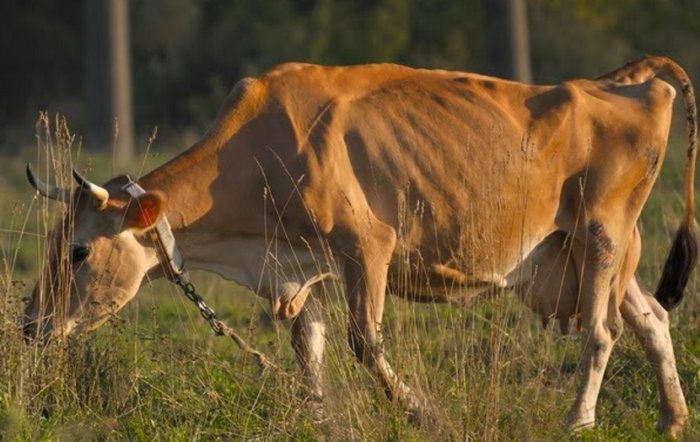
brucellosis in cows
Brucellosis is treated with broad-spectrum antibiotics. The active substance levofloxacin has an inhibitory effect on bacteria of the genus Brucella. The drug with this substance in the composition is called Lexoflon. Treatment continues for at least 5 days.
Attention! Milk and meat from a cow infected with brucellosis should not be consumed until it has undergone a course of treatment. In the future, it is necessary to take tests twice – if the result of the test in both cases turns out to be negative, the products from the animal are allowed to be eaten.
Foot and mouth disease
FMD is caused by an RNA virus. The causative agent belongs to the Picornaviridae family, the genus Aphthovirus. Having penetrated into the body, the virus first concentrates in the epithelial cells at the site of introduction. It is here that primary aphthous foci appear – vesicles with watery contents. When the concentration of the virus reaches its climax, it enters the bloodstream. From this point on, the cow’s health deteriorates sharply.
FMD symptoms:
- The temperature rises to 41,5 degrees.
- Refusal to eat.
- The appearance of aphthae on the mucous membrane of the mouth, on the udder, in the interhoof gap, in bulls they are concentrated in the scrotum.
- Foamy saliva is released from the mouth, the animal smacks its lips.
FMD can occur in a benign and malignant form. In the first case, if it is not complicated by a secondary infection, recovery occurs in 10-14 days. In the second case, the animal dies.
Attention! The disease is especially dangerous for calves up to 3 months. In them, the disease manifests itself in a different way – symptoms characteristic of gastroenteritis appear, aphthae do not form on the body of young animals.
FMD treatment includes:
- The use of anti-foot and mouth serum, which increases the body’s resistance.
- Treatment of aphthous foci with solutions of potassium permanganate, furacilin, as well as synthomycin ointment.
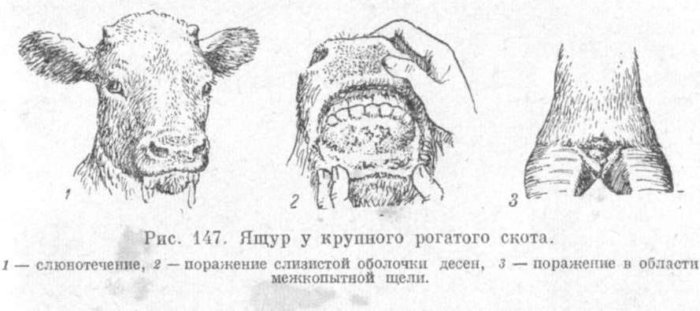
cow foot-and-mouth disease
Antibiotics should be used to prevent secondary infection. Sick animals are given food in liquid form. If the animal does not eat at all, then it is recommended to introduce mashed flour into her stomach through a probe.
Smallpox
Smallpox in a cow is caused by several types of pathogens – cowpox virus, vaccinia virus or swine pox. This disease is characterized by the appearance on the skin of papules with clearly defined contours and a depressed center. The disease is acute and is accompanied by intoxication of the body and fever.
Symptoms:
- Weakness, loss of appetite.
- The appearance on the udder and near the nose and on the lips of characteristic papular rashes of pink color.
- Further, roseolas change color to dark, burst, crusts form on them.
- The cow is oppressed, more often lies.
- The udder is painful, the cow, if it gets up, then walks with widely spaced limbs.
- Body temperature is elevated.
Attention! Smallpox can be complicated by mastitis, so it is important to regularly express milk from the udder. If this cannot be done manually, a catheter is used.
Smallpox treatment includes:
- Treatment of papules with disinfectant solutions – formalin, brilliant green.
- For the healing of smallpox, zinc and boric ointments are used.
- To stimulate the immune system, cows infected with smallpox are given vitamin supplements.
- Antibiotics (Bicillin, Streptomycin, Oxytetracycline) are used in order to avoid the addition of a bacterial infection.
For prophylactic purposes, the smallpox vaccine is used. It is especially important to vaccinate areas where cases of the disease have been reported.
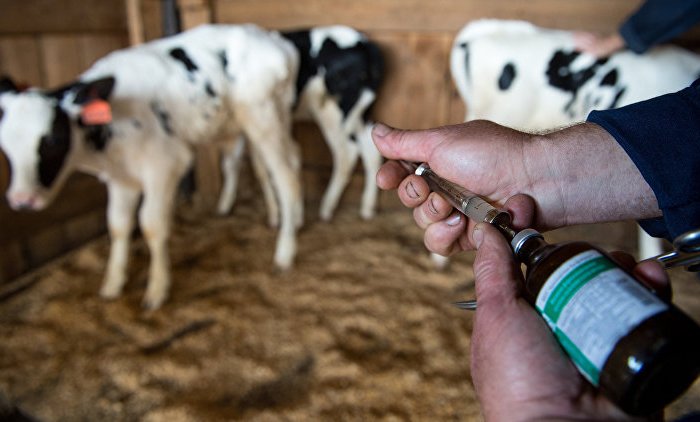
Smallpox vaccination
Tuberculosis
The causative agent of tuberculosis is a microbacterium – Koch’s wand. Penetrating into the body, it forms the primary lesion. In the future, their number increases. Foci of infection gradually destroy the tissues of the organs in which the bacteria have settled. Depending on the location of the infection, the disease occurs in different forms. There are tuberculosis of the lungs, bones, intestines, uterus. With a generalized form of the course, the infection spreads through the bloodstream and simultaneously affects several structures of the body.
Attention! A person can get tuberculosis from a cow.
Symptoms of the disease are not always pronounced, often in adults, tuberculosis occurs latently, which makes it difficult to diagnose. Consider the signs of lung damage by tuberculosis, since this form of the disease is the most common:
- Dyspnea.
- Loss of appetite.
- Exhaustion.
- Slight rise in temperature.
- Cough (sometimes fragments of necrotic tissue can be found in the sputum).
- Enlargement and low mobility of the lymph nodes.
- Wheezing in the lungs.
When other organs are affected, the symptoms look different. For example, if tuberculosis develops in the udder, then its back part increases, as well as the supra-udental lymph node. If the bacteria settled in the intestines, there is diarrhea with bloody and purulent inclusions in the feces. A characteristic symptom of a generalized form of tuberculosis is an increase and soreness of all lymph nodes.
Diagnosis of the disease in cows is carried out using a tuberculin test. It is done to the entire livestock on time. All animals that have a positive reaction to tuberculosis are taken away for slaughter. The farm where sick animals are found is considered unfavorable. A complete replacement of the herd with preliminary disinfection of all premises is recommended.
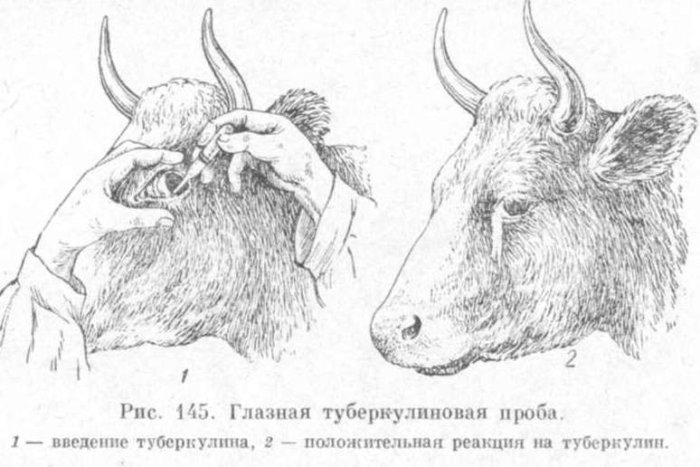
tuberculin test
Rabies
When studying diseases of cattle, one cannot fail to mention rabies. This is a deadly disease, which is characterized by damage to the central nervous system of an animal by a prion protein. When the corpses of infected individuals are opened, destructive changes in the brain are noted – its structure becomes porous, resembling a sponge. Another name for rabies is transmissible spongiform encephalopathy.
Symptoms:
- Aggressive or restless behavior.
- Exhaustion.
- Photophobia.
- The animal is afraid of loud noises.
- The cow bumps into obstacles, stumbles, falls.
- Shaky gait.
- Convulsions, tremor.
- The back is hunched over.
If rabies is suspected, a veterinarian should be called. If the diagnosis is confirmed, the cow is killed, and her brain is given for research. The animal carcass is burned.
leukosis
The disease leukemia in cows also has an infectious nature. It is caused by a virus of the same name. It enters the body of a healthy individual through the digestive tract, respiratory organs, during sexual intercourse, and is also transmitted to the fetus through the placenta from the mother. In rare cases, blood-sucking insects become carriers of infection. With leukemia, the work of the hematopoietic system of the animal is disrupted.
Clinical signs of the disease in most cases do not appear if it proceeds latently. Leukemia can be diagnosed only by changes in the composition of the blood. Only at the final stage of the disease, alarming symptoms appear:
- Exhaustion.
- Reduced productivity.
- Enlargement of lymph nodes.
Treatment for leukemia has not been developed. If virus carriers are found in a farm, it is considered unfavorable. Sick animals must be eliminated, and all other individuals should be checked for leukemia.
Attention! You can not eat milk and meat from a leukemic cow.
Actinomycosis
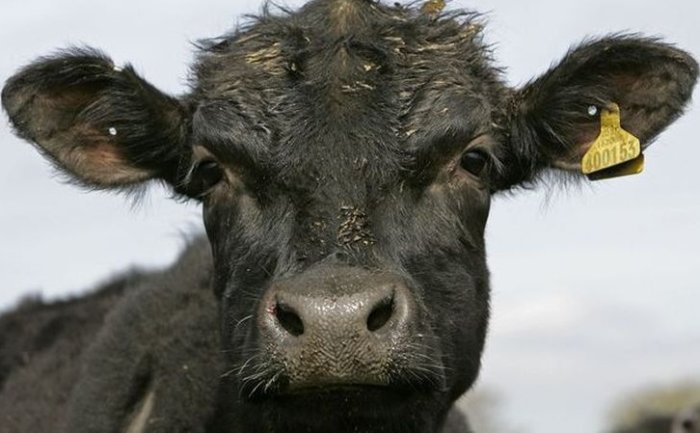
Actinomycosis in KRS
Actinomycosis is a chronic disease caused by radiant fungus. It is characterized by the formation of granulomas, abscesses and non-healing fistulas in various organs and on the skin. In most cases, granulosa foci are formed at the sites of introduction of the radiant fungus into the animal’s body. However, with the progression of the disease, the fungal infection spreads throughout the body and granulomas can form in the internal organs – the liver, kidneys, lungs. The main route of infection with actinomycosis is damage to the mucous membranes of the mouth or skin (abrasions, wounds, including postoperative ones).
Symptoms:
- The occurrence of dense tumors in the neck, intermaxillary space, less often – on the udder.
- Seals are cold, painless.
- In the future, the tumors are opened, purulent exudate is released from them.
- The resulting fistulas do not heal for a long time.
- The temperature of the animal is normal.
Antibiotics of the penicillin and tetracycline series are used to treat actinomycosis. The course of treatment is long – at least 6 weeks. When attaching a secondary anaerobic infection, metronidazole is used. Topically apply aqueous solutions of iodine and potassium iodide. Immunotherapy with actinolysate is mandatory. It is administered by injection under the skin or intramuscularly.
Attention! Antibiotic treatment regimens for actinomycosis are quite specific and should be prescribed by a veterinarian.
Non-communicable diseases of cattle
Non-infectious (non-contagious) diseases of cows are not as dangerous as they do not spread to other animals in the herd. The reasons for their occurrence are most often the wrong conditions for keeping cows and the poor quality of nutrition. These include:
- Traumatic reticulitis and pericarditis.
- Rumen tympania.
- Hoof diseases.
- White muscle disease.
- Blockage of the esophagus.
- Mastitis.
- Milk fever.
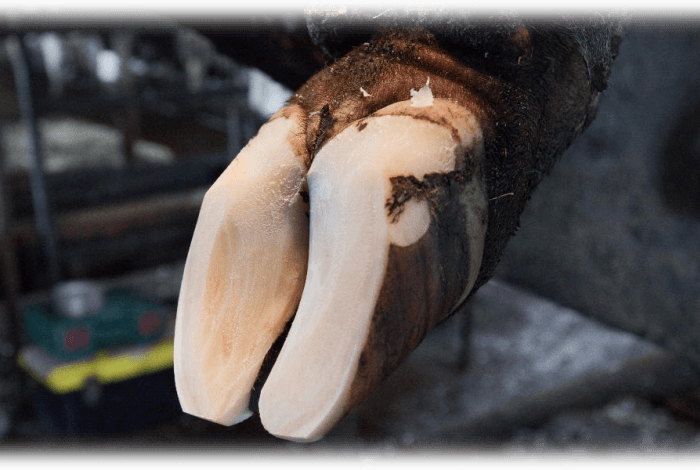
Hoof diseases
Any of these ailments can be fatal if you do not help the cow in time. Brief information about these ailments will help farmers to navigate when they find strange symptoms in cows and take rescue measures.
Traumatic reticulitis and pericarditis
The cause of these two diseases is the swallowing of sharp objects by the cow – needles, chips, wire, nails. In traumatic reticulitis, a foreign body perforates the mesh wall, resulting in an inflammatory process. If a sharp object damages the connective tissue of the lining of the heart, we are talking about traumatic pericarditis.
Symptoms of traumatic reticulitis:
- The strength of the contractions of the proventriculus is weakened or atony occurs.
- With a complete stop of the stomach, constipation is possible.
- The appetite decreases, sometimes the cow completely refuses food and drink.
- The temperature rises in case of development of peritonitis.
- The cow moves carefully, lies down neatly.
With reticulopericarditis, additional symptoms are:
- Increased heart rate up to 120 beats per minute.
- Decreased muscle tone.
- The cow stands in an unnatural pose – her front limbs are widely spaced, and her hind limbs are brought together under the body.
Treatment for traumatic reticulitis involves removing the foreign object from the mesh. To do this, use a magnetic probe. In extreme cases, resort to surgical intervention. Antibiotics – streptomycin, tetracycline are used for suspected development of peritonitis. Inside give ichthyol, as well as sodium or magnesium sulfate.
Reference. With traumatic pericarditis, treatment is ineffective, the animal is sent for slaughter.
Rumen tympania
The swelling of the scar is called tympania. Various factors contribute to increased gas formation in the stomach of a cow – blockage of the esophagus by a foreign body, eating fermenting food – succulent grass, cabbage leaves, young corn.
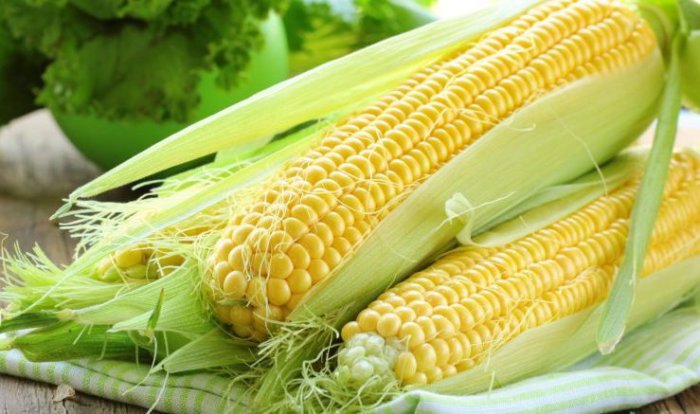
Young corn
Tympania is dangerous because the swollen scar presses on the diaphragm, resulting in oxygen starvation in the cow.
Attention! Help with tympania of the scar should be provided as soon as possible, otherwise the animal may die within a few hours from asphyxia.
Symptoms of a tympanic scar:
- Loss of gum.
- Refusal to feed.
- Anxiety – the cow waves its tail, looks around, beats itself on the stomach.
- The left hungry fossa protrudes.
- Breathing is shallow, rapid.
- In severe cases, the animal breathes with its mouth wide open.
- Foamy saliva is secreted.
- Blueness of the mucous membranes is observed.
Treatment is aimed at eliminating the cause of the swelling. If there is a blockage of the esophagus with a foreign body, it must be removed with a probe or by hand. To stimulate the discharge of gases, a scar massage is performed, the animal is placed so that the front of the body is raised. If gases do not leave, a probe is inserted into the esophagus to facilitate their removal. The area of the hungry fossa is poured with cold water, provoking spasms. The cow is given inside to drink milk, a solution of ichthyol, hellebore tincture and other means that prevent gas formation.
Attention! If no measures help to achieve the discharge of gases, and the signs of asphyxia intensify, emergency measures are taken – a puncture of the scar.
Hoof diseases
Diseases of the hooves give the animal anxiety – pain when walking, in a standing position. Consider the most common hoof diseases:
- Corolla phlegmon – inflammation of the tissues of the corolla, accompanied by suppuration.
- Lameness – occurs if the stratum corneum on the hooves has grown strongly (occurs during the period of stall keeping).
- Strawberry disease – characterized by the appearance of small red tubercles in the base of the hoof gap or hoof diadem.
- Laminitis – soft tissues fill with fluid.
- Aseptic pododermatitis is an inflammation of the skin at the base of the hoof.
- Joint problems.
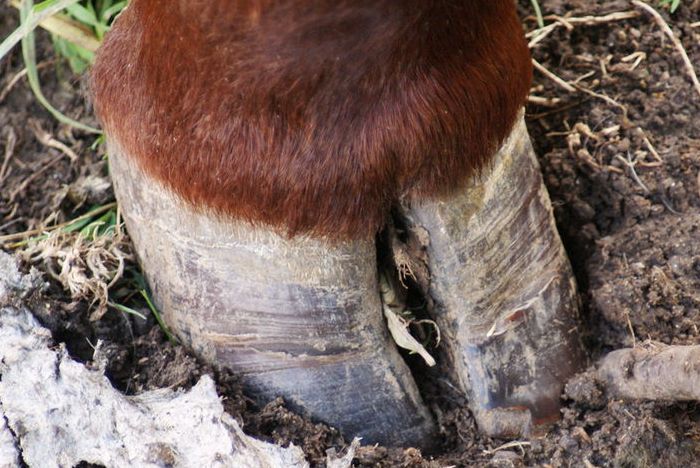
Laminitis
You can detect hoof diseases in a cow by behavior. The animal limps, often lies, during examination there is swelling of the tissues, enlargement of the joints, their deformation, abscesses, ulcers, pus discharge from the interhoof gap. To make a diagnosis, it is worth inviting a veterinarian.
white muscle disease
This disease affects calves up to three months of age. Its main reason is that the cow does not receive enough vitamins and microelements during pregnancy, her diet is rather poor. It is not exactly established what deficiency causes muscular dystrophy of calves, presumably the disease develops due to a lack of vitamin E and selenium in the body of calves.
Symptoms:
- Oppression.
- Muscle paralysis, convulsions, head tilting back.
- Intestinal disorders (atony, bloating).
- Rapid, heavy breathing.
- Salivation.
- Discharge of purulent mucus from the nose.
- Tooth grinding.
Attention! With white muscle disease, pneumonia often develops. In this case, the temperature rises in the animal.
The treatment is aimed at eliminating the lack of vitamin E and selenium in the body of calves. In parallel with injections of sodium selenite and tocopherol, microelements are introduced into the diet – cobalt, copper, manganese and others. Symptomatic therapy is carried out to improve the functioning of the heart and other organs.
Blockage of the esophagus
The cause of blockage of the esophagus is the swallowing of foreign objects by the cow – stones, wire, chips, rags, as well as large fragments of root crops. The result is a complete or partial blockage of the esophageal tube.
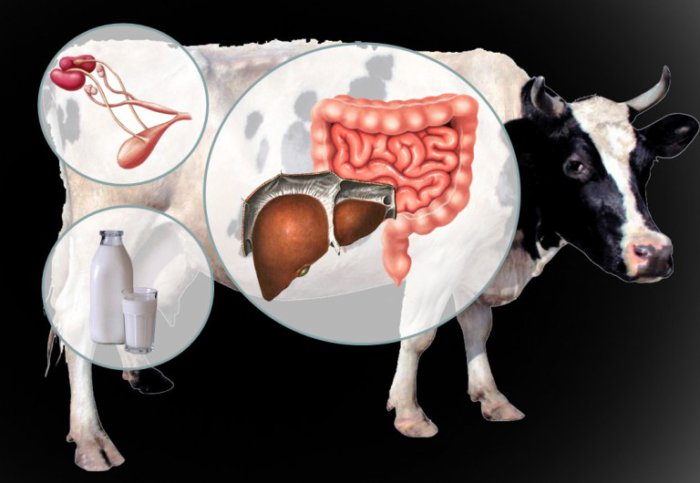
The digestive tract of a cow
Symptoms:
- Stopping the stomach.
- Loss of gum, no belching.
- The animal is worried, looks back, stretches its head, opening its mouth.
Reference. With complete blockage of the esophagus, atony of the stomach develops and gases quickly accumulate in the rumen (read about tympania of the rumen above).
Treatment involves the removal of a foreign object from the esophagus. This can be done by hand by securing the cow’s mouth with a wedge in the open position. If the object is deep, it is pushed into the scar with a probe. In some cases, it is worth trying to induce vomiting in a cow by pulling out her tongue. Together with the vomit, a foreign body comes out.
Mastitis
Mastitis is an inflammation of the udder. It develops for various reasons, among which are the keeping of animals in dampness, cold, without bedding, reduced immunity of cows, unsanitary conditions in the barn, and improper udder hygiene. There are many forms of mastitis, but the symptoms of the disease are approximately the same:
- An increase in one or more udder lobes.
- Mammary gland painful, hot, hard.
- Changes in the consistency, color, taste of milk (it is watery, with curd clots, bitter or salty, pink, bluish or beige).
- Discharge of pus from the nipples.
- Loss of appetite.
- Sometimes there is an increase in temperature.
Attention! With a latent form, mastitis cannot be detected on its own. Periodic milk testing is recommended to check for inflammation.
Mastitis is treated with antibiotics. They are used as injections for up to 6 days. Milk is regularly expressed, the udder is massaged. A good effect is achieved after applying compresses, as well as rubbing ichthyol or camphor ointments.
Milk fever
Postpartum paresis occurs more often in cows with high productivity at the age of 7-8 years. This disease is characterized by the development of paralysis of some parts of the body. Until now, the causes of this condition have not been precisely established, however, it is assumed that the disease occurs against the background of a lack of calcium in the body.
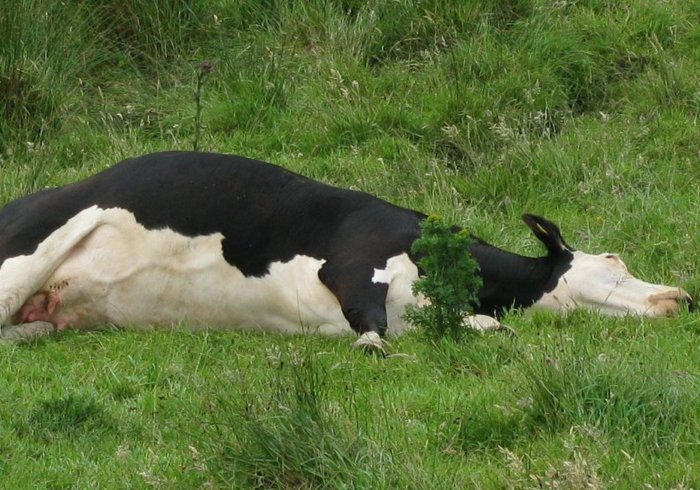
Postpartum paresis
Symptoms:
- Loss of chewing gum, atony of the stomach.
- Shaky gait.
- The animal lies, the neck is curved.
- The tongue falls out, mucus is released from the mouth.
- Breathing is sharp, heavy.
- The cornea of the eye becomes cloudy.
Treatment includes the introduction of intravenous injections of a solution of sodium chloride (10%), as well as a solution of caffeine (20%) subcutaneously. In parallel, they practice pumping the udder with air through the catheter.
The farmer needs to study the various diseases of cows in general terms in order to be able to respond in time to alarming symptoms. It will depend on this whether he can save the animal if he is in danger, or not.
